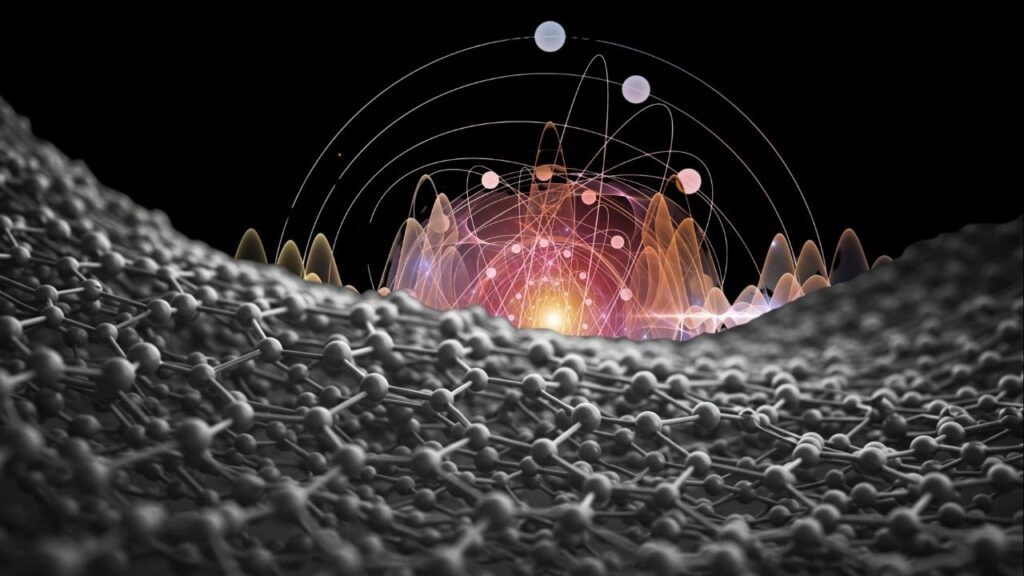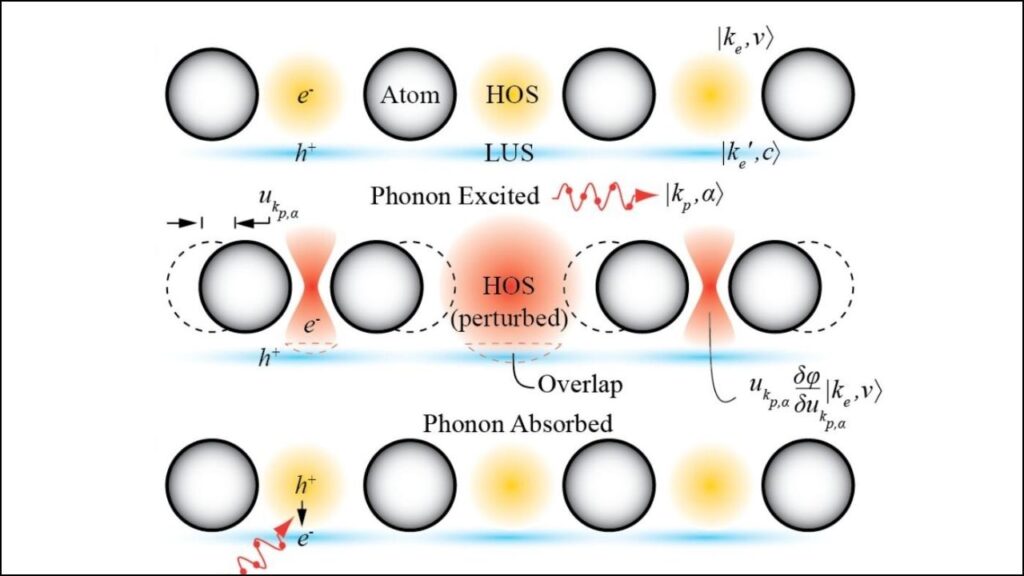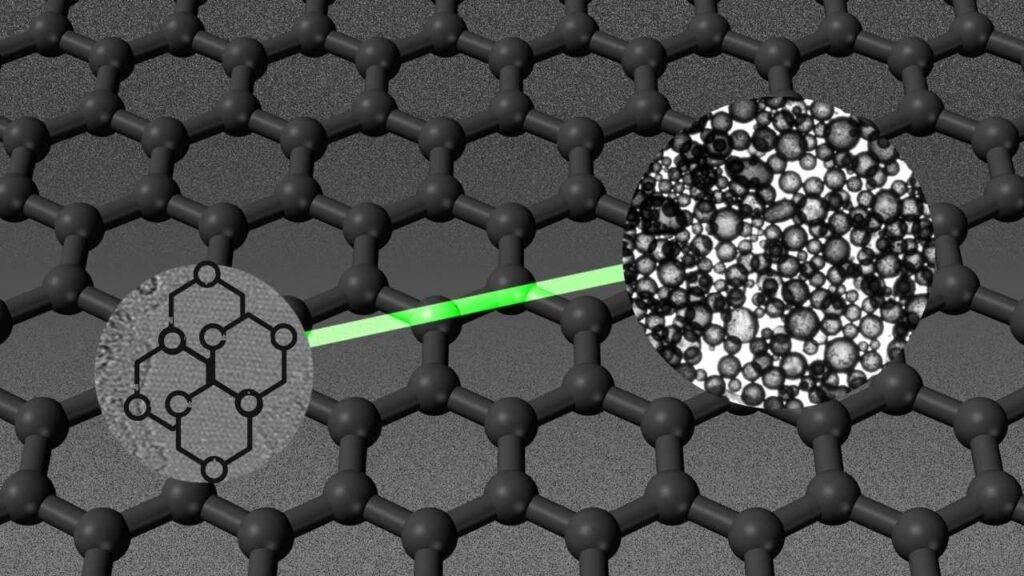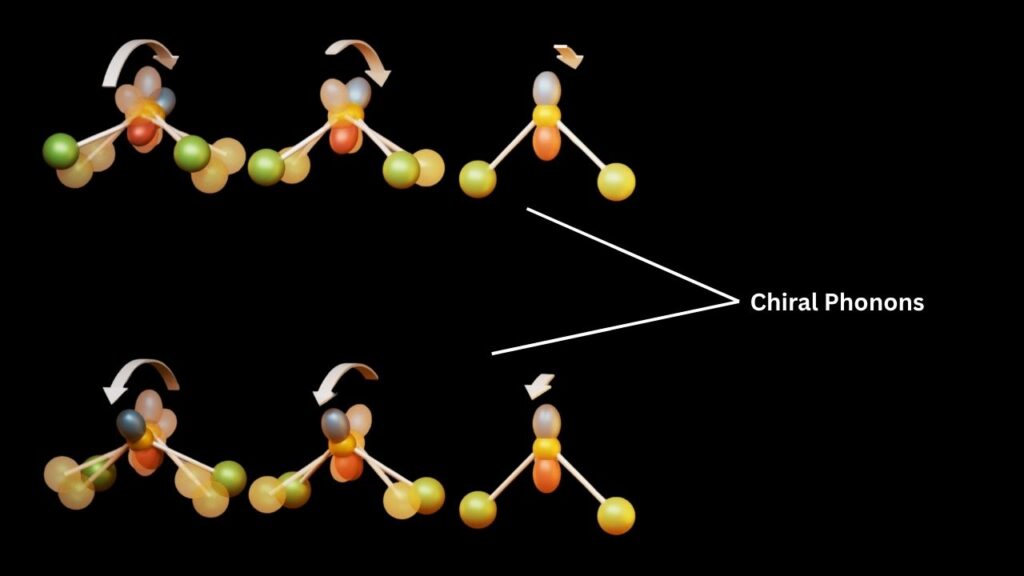Quasiparticle Chirality and Electron-Phonon Interactions: Quasiparticle chirality and electron-phonon interactions are revolutionizing our understanding of how new material phases emerge, especially in advanced materials like graphene. These two concepts, while rooted in quantum mechanics, are shaping the future of electronics, quantum computing, and materials science.

In this article, we’ll break down these complex ideas into simple terms, share the latest research, and offer practical insights for both curious students and seasoned professionals.
Quasiparticle Chirality and Electron-Phonon Interactions
| Feature/Topic | Summary | Key Data/Stats | Career/Professional Insight |
|---|---|---|---|
| Quasiparticle Chirality | Refers to the “handedness” of particle-like excitations in materials, affecting how electrons move. | Enables exotic phases like topological superconductivity. | Understanding chirality is crucial for careers in quantum materials and nanotechnology. |
| Electron-Phonon Interactions | How electrons interact with vibrations (phonons) in a material’s lattice. | Directly linked to superconductivity and material engineering. | Central to research in superconductors and next-gen electronics. |
| Kekulé-Ordered Graphene | A pattern of alternating bonds in graphene that changes its electronic properties. | Creates domains with enhanced electron-phonon coupling. | Offers new ways to design materials with tailored properties. |
| Chiral Phonons | Vibrations with a “twist” (angular momentum), carrying magnetic effects. | Observed in materials like quartz and monolayer tungsten diselenide. | Opens doors to energy-efficient information processing. |
Quasiparticle chirality and electron-phonon interactions are at the heart of some of the most exciting advances in material science today. By harnessing these properties, researchers are creating new material phases with extraordinary potential—from superconductors that could power lossless energy grids to quantum devices that may revolutionize computing. Whether you’re a student, a professional, or just curious, understanding these concepts opens up a world of possibilities in science and technology.
What Are Quasiparticles and Why Does Chirality Matter?
Let’s start with the basics. In the world of materials, particles like electrons don’t always behave as simple, isolated objects. Instead, they often act as quasiparticles—a kind of “team effort” between the electron and its environment. Imagine a soccer player (the electron) running on a muddy field (the material). The player’s movement is affected by the mud, and together, they form a new, combined identity: the quasiparticle.
Chirality means “handedness.” Just like your left and right hands are mirror images but not identical, some quasiparticles have a preferred direction or twist. This property can dramatically change how electricity and heat move through a material. In graphene, for example, electrons can have a specific chirality, leading to unusual effects like the quantum Hall effect and ultra-efficient electrical conduction.
How Do Electron-Phonon Interactions Shape Material Properties?
Now, let’s talk about phonons. These are not particles in the traditional sense but are more like waves—vibrations of atoms within a material. When electrons move, they can interact with these vibrations, exchanging energy and momentum. This process is called electron-phonon interaction.
Why is this important? Because it’s the secret sauce behind superconductivity—the phenomenon where materials conduct electricity with zero resistance. When electron-phonon interactions are just right, electrons can pair up and move effortlessly through the material, creating a superconducting state.

Real-World Example: Graphene’s Hidden Patterns

Graphene is a superstar material: a single layer of carbon atoms arranged in a honeycomb pattern. But researchers have discovered that if you tweak this pattern—creating what’s called a Kekulé order (a repeating pattern of strong and weak bonds)—you can control how electrons and phonons interact. This leads to areas with stronger or weaker electron-phonon coupling, making it possible to engineer materials with custom properties, such as regions that are more likely to become superconducting.
Chiral Phonons: The Vibrations With a Twist
Here’s where things get even more interesting. Not all phonons are the same. Some have chirality—they vibrate with a twist, like a spinning top. These chiral phonons can carry angular momentum, meaning they can act like tiny magnets and interact with other particles in new ways.

Researchers have observed chiral phonons in materials like quartz and monolayer tungsten diselenide. These vibrations can influence how electrons move, paving the way for new types of electronic devices and even quantum computers. For instance, chiral phonons can help transfer information more efficiently and could be used to create materials that switch states at lightning speed.
How Do These Concepts Drive Novel Material Phases?
By combining quasiparticle chirality and electron-phonon interactions, scientists can create materials with entirely new behaviors, known as novel material phases. Here’s how it works:
- Breaking Chirality: When you break the natural chirality of electrons in a material (for example, by introducing a Kekulé pattern in graphene), you open the door to new electronic states, such as topological superconductivity—a state with unique, robust properties that could be used in quantum computers.
- Spatial Variation: In Kekulé-ordered graphene, the strength of electron-phonon interactions isn’t uniform. Some regions have stronger coupling, which can be harnessed to design materials with specific electronic or superconducting properties.
- Chiral Phonon Effects: Chiral phonons can induce magnetic effects and enable ultrafast control over electronic states, offering new ways to manipulate information at the atomic scale.
Step-by-Step Guide: Understanding and Applying These Concepts
Step 1: Learn the Basics of Quasiparticles and Chirality
- Quasiparticles are combinations of electrons and their interactions with the material.
- Chirality refers to the “handedness” of these particles, affecting how they move and interact.
Step 2: Explore Electron-Phonon Interactions
- Electrons can exchange energy with phonons (vibrations).
- The strength of this interaction determines key properties like electrical resistance and superconductivity.
Step 3: Investigate Material Patterns Like Kekulé Order
- By creating patterns in materials (e.g., alternating bonds in graphene), you can control electron-phonon interactions.
- This allows for “designer materials” with custom electronic behaviors.
Step 4: Understand Chiral Phonons and Their Impact
- Chiral phonons are vibrations with angular momentum.
- They can interact with electrons to create new phases, such as topological insulators and superconductors.
Step 5: Apply This Knowledge in Research and Industry
- Careers in quantum materials, nanotechnology, and electronics increasingly rely on understanding these advanced concepts.
- Engineers and scientists can use these principles to design faster, more efficient devices and potentially unlock new technologies like quantum computers.
Scientists Crack 500-Million-Year-Old Code That Controls the Immune System
Ocean-Like Fluids Reveal Tiny Porous Particles Sink Faster: A Surprising Discovery in Marine Science
Hydrogen Fuel at Half the Cost? New Catalyst from South Korea
FAQs About Quasiparticle Chirality and Electron-Phonon Interactions
Q1: What is a quasiparticle?
A: A quasiparticle is a particle-like disturbance in a material, combining an electron’s properties with its environment. It helps explain complex behaviors in solids.
Q2: Why is chirality important in materials?
A: Chirality determines the directionality of particle movement, influencing electrical and thermal properties. It’s key to phenomena like the quantum Hall effect.
Q3: How do electron-phonon interactions lead to superconductivity?
A: When electrons interact with phonons in just the right way, they pair up and move without resistance, creating a superconducting state.
Q4: What are chiral phonons?
A: Chiral phonons are vibrations with a twist, carrying angular momentum. They can create magnetic effects and influence how electrons behave in a material.
Q5: How can these concepts be used in real-world applications?
A: Understanding and controlling these interactions allows scientists to design materials for faster electronics, better superconductors, and even quantum computers.






